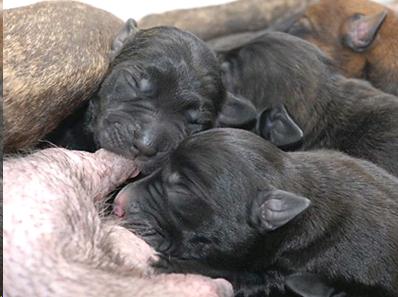
Development, Communication and Social Behavior in the Dog
Table of Contents
- Development, Communication, and Social Behavior in the Dog
- Developmental Periods
- Neonatal Period (Birth - 14 Days)
- It is best to think of the dam and her puppies as one functional unit during this time.
- A puppy's basic needs are food, warmth, and maternal care
- Neonatal Behaviors
- How Old is This Puppy?
- Transition Period (14-21 Days)
- At 3 weeks old social behaviors begin to emerge.
Text and Images from Slide
Neonatal Behaviors

- Rooting
- Suckling
- Righting
- Distress Calling
- Activated Sleep
Photo courtesy of Tom Schaefges and Harriet Weatherford
